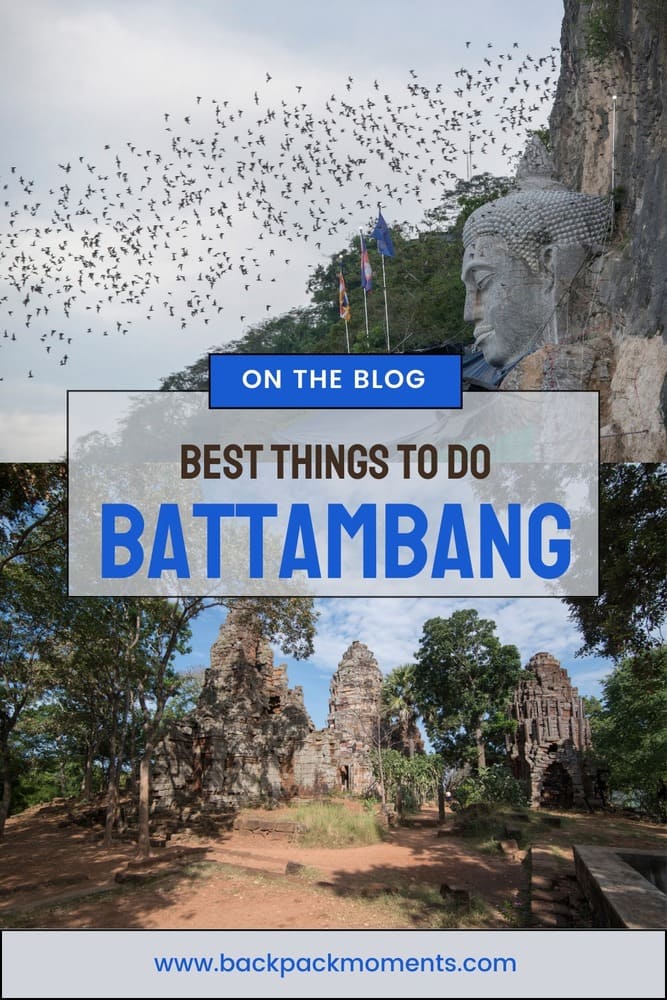21 Best Things to Do in Battambang, Cambodia
This post may contain affiliate links. If you make a purchase using one of these links, I may receive a small reward at no extra cost to you. See my Disclosure Policy for more information.
The Angkor King launched his staff during combat but missed and it landed in the forest never to be found again. The Forest was thereafter called Bat Dambong which stuck till this very day.
Fascinating tales by the Angkorians, right? Who would’ve thought that Battambang, a city that barely existed on tourist maps 10 years ago had such an interesting backstory?
It’s Cambodia’s third biggest city and is a laid-back alternative to Siem Reap some 80 km northwest.
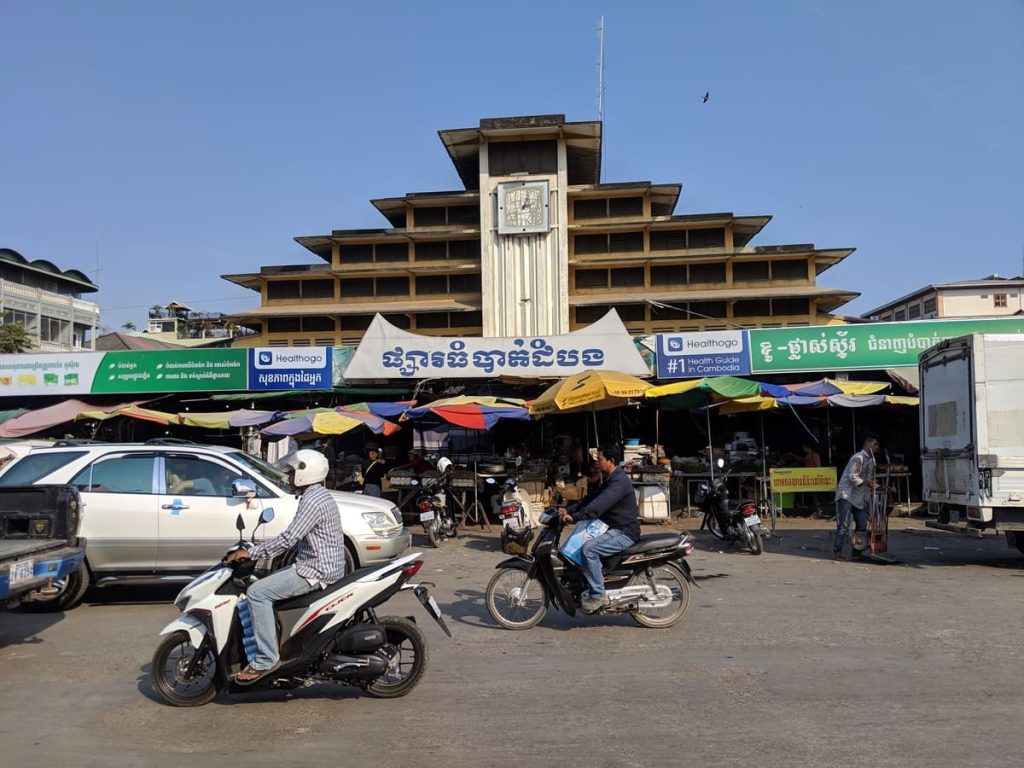
Surprisingly, there are more than enough things to do in Battambang to keep you entertained for a day or two. And then, being all calm and easygoing, you may even decide to spend a whole week like I did!
Here’s a public map of all places mentioned in the article:
Things to do in Battambang City Proper
Here you will find the places within walking distance from the central core of Battambang – the 3 streets parallel to the Sangker River built by the French. This is also where you’re most likely to stay in Battambang.
1. Phsar Nat (The Central Market)
Art Deco in Southeast Asia? Yes, that’s true!
While you may associate the style with rich European cities (and Napier in New Zealand), Phsar Nat, featuring a clocktower and balanced proportions was built by the French colonialists in the 1930s. That explains the conundrum.
Go to the Central Market in the morning for a bowl of the best Kuy Teav (noodle soup) in town (only 5000 KHR/1.25 USD) and some local-life-people-watching.
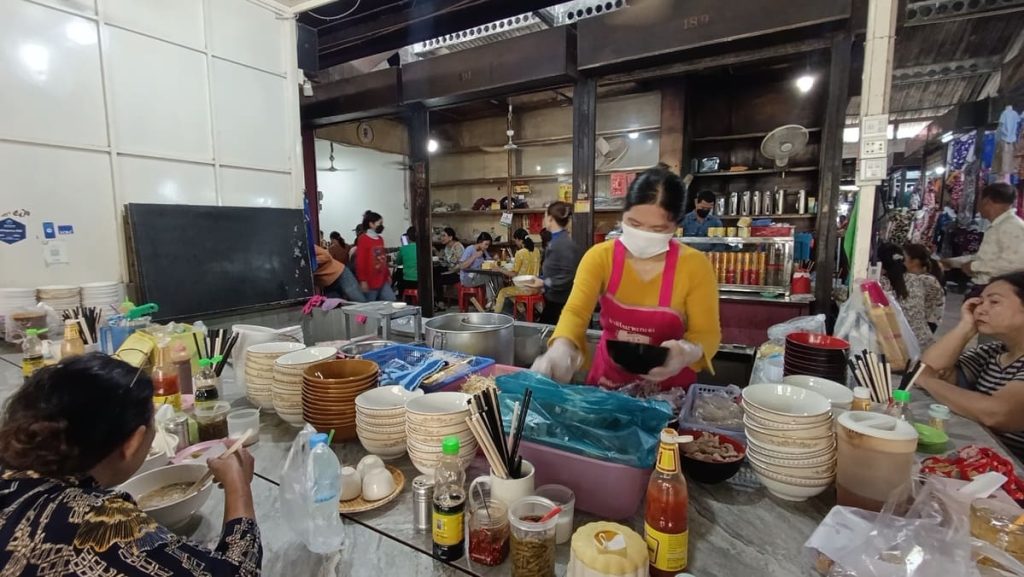
On the outside, you will find the fresh fruit, meat, and dairy products. Inside are the gold, clothes, and dry foods sections.
2. French Colonial Architecture
While at it, why not take a walk around Battambang’s city center and check out what else the French left?
Between the unassumingly called Road 1 and Road 3, the streets are parallel, the buildings are 2 stories high and may make you feel like you’re in a French town untouched for 100 years.
Notice the colors, the small balconies, and the buildings’ rounded edges. Some notable Colonial buildings in Battambang are:
- Governor’s House (now the Battambang Provincial Hall)
- National Bank Of Cambodia
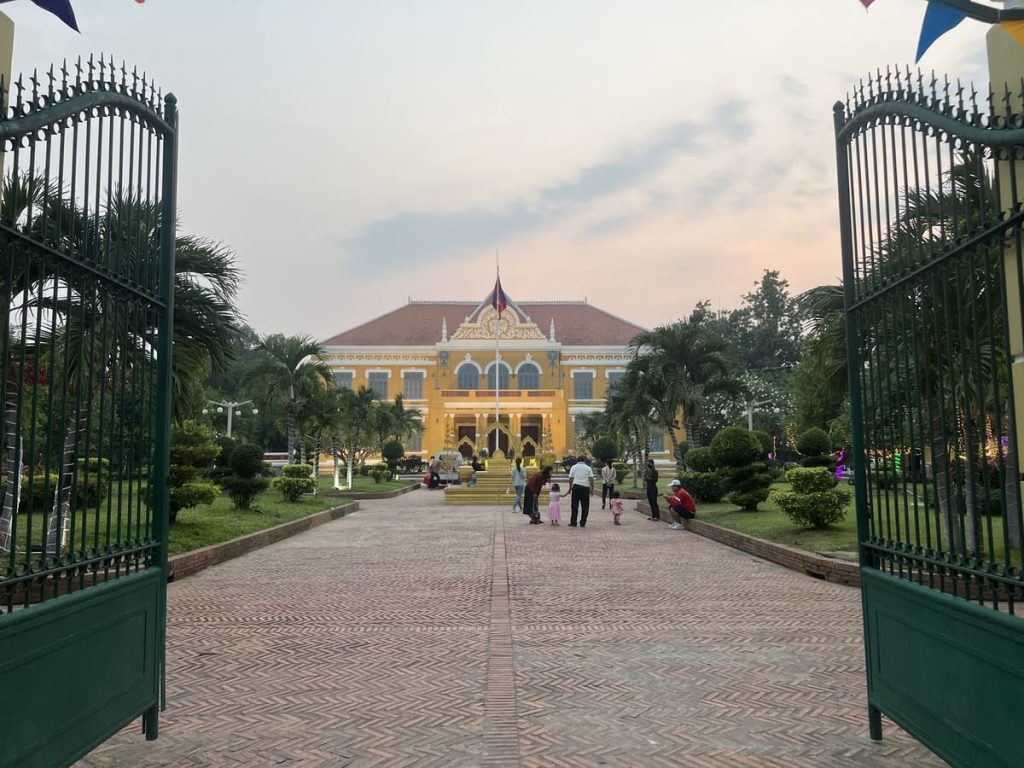
3. Hunt Street Art
While in the center of Battambang, keep your eyes peeled for murals and street art. Ever since the 2023 S’Art Urban Art Festival, there have been paintings, stylized graffiti, and various street art installations scattered around the central areas.
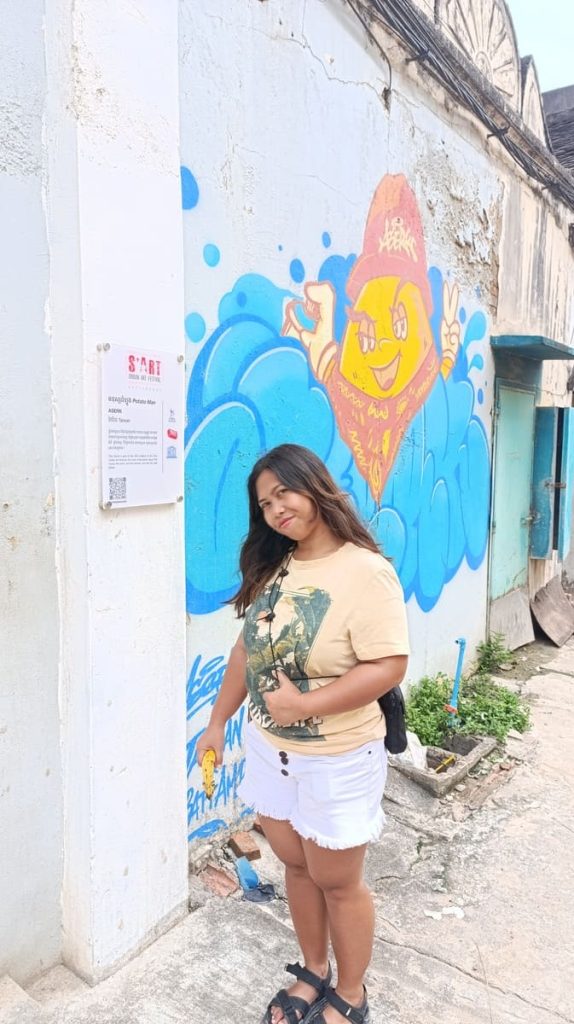
There isn’t really a list of murals – that’s why it’s more of an egg hunt. Happy hunting!
4. Wat Kandal
Wats, wats, and more wats. If you spend some time in Thailand, Laos, or Cambodia, you will quickly be fed up with Wats (Buddhist Temple/Monastery).
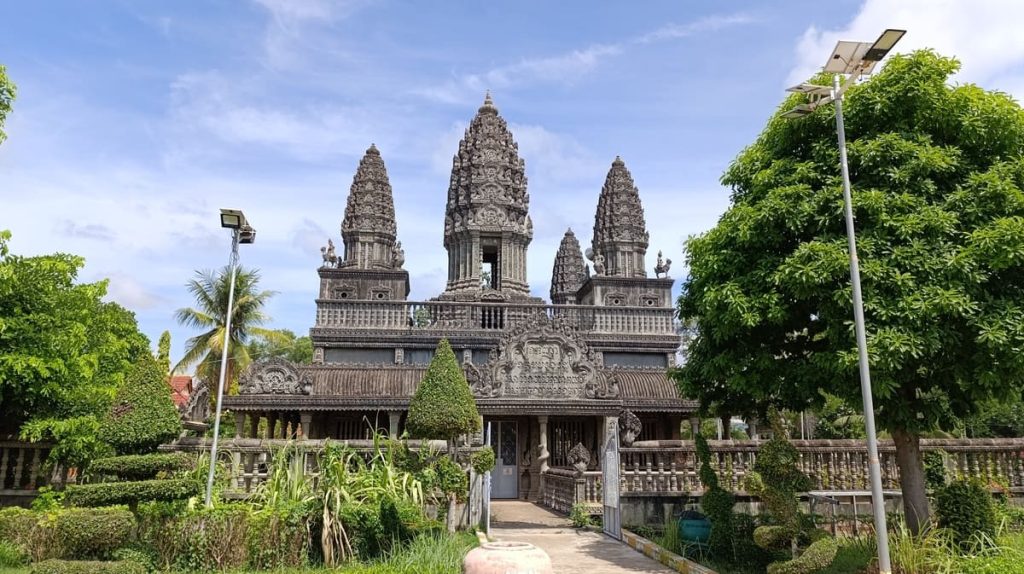
And yet, some are quite pretty to look at even if you’ve already seen a hundred.
Such is, I would argue, Wat Kandal – a complex of various temples, new and old. Watch out for the Angkorian-style temple on the eastern side. It reminded me a bit of Prambanan in Java.
5. Ta Dumbong Kro Nhong
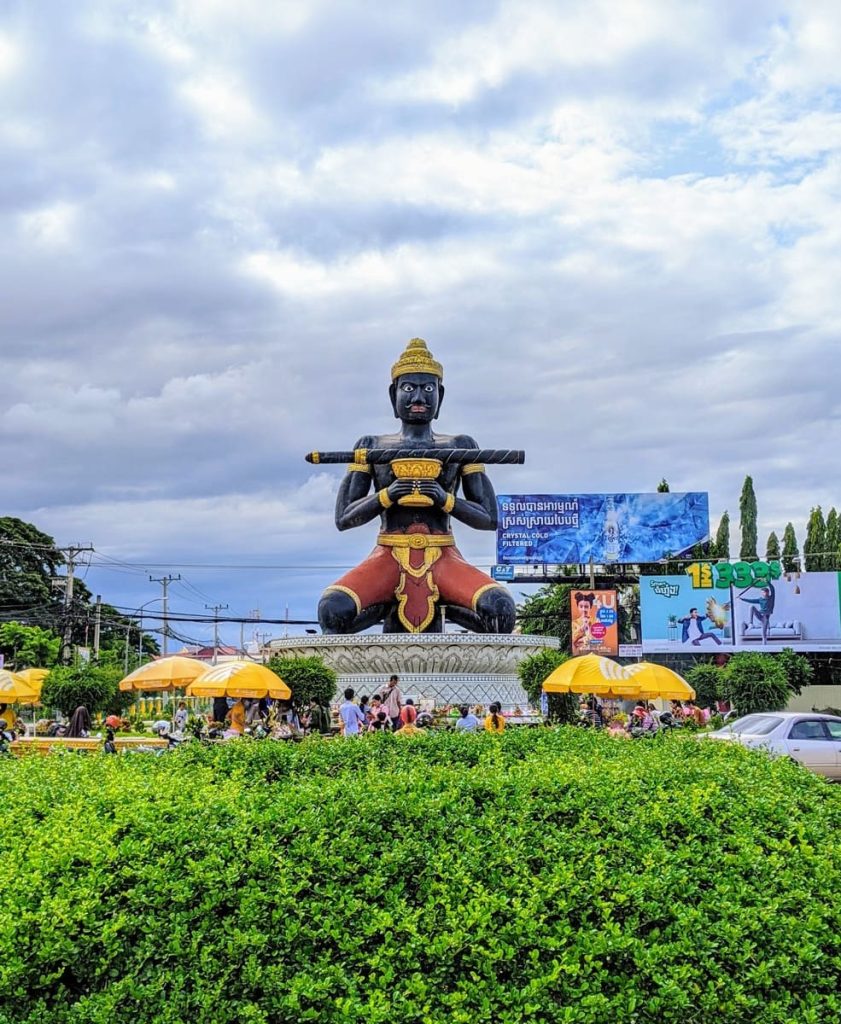
Remember the story of Battambang’s name at the beginning of the article? Yeah, so this statue represents the “Lost Staff”.
It’s not impressive in any way and it’s just that – a statue of a black deity holding a sacred staff. But if you’re in the area, you may as well see it.
Locals worship the statue for luck, prosperity, and road safety.
6. Dumplings at Lan Chov Khorko Miteanh
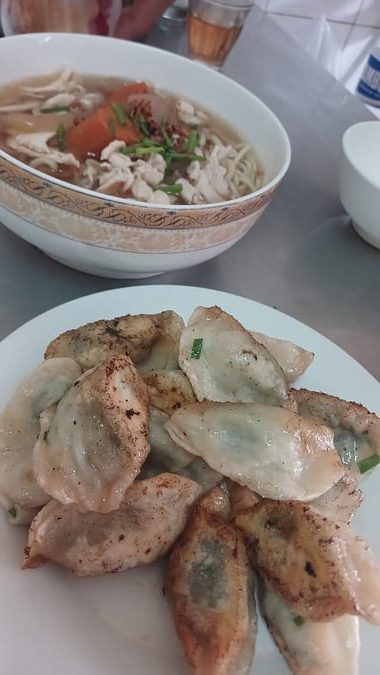
Time for lunch!
Battambang has many options from round-the-corner noodle stalls to high-end restaurants. But if you want something cheap and tasty, go get the dumplings at Lan Chov Khorko Miteanh (Address).
Customer service is lackluster but the food is absolutely finger-licking.
Portion of 12 dumplings costs 8000 KHR (2$).
7. Phsar Boeung Chhouk
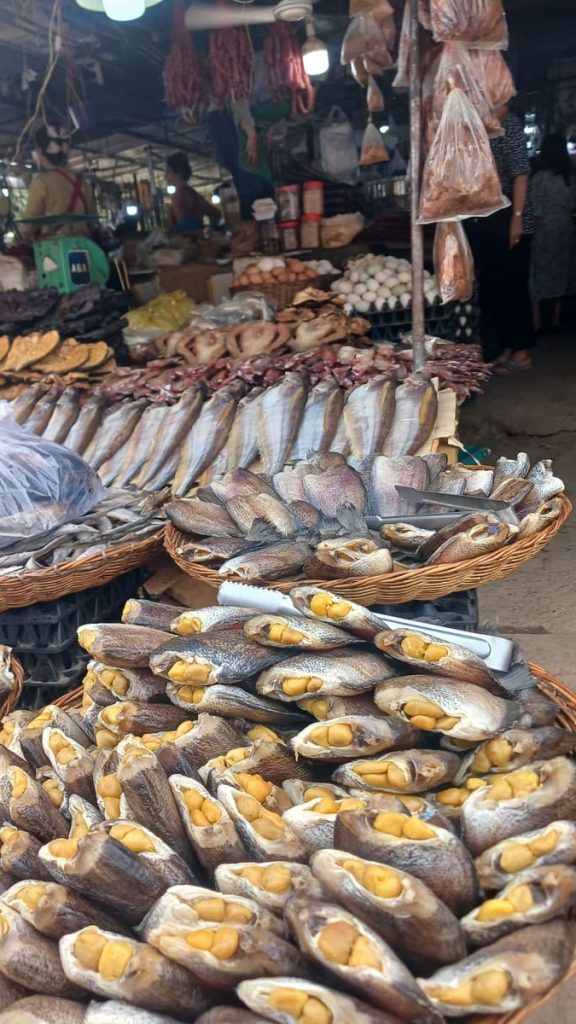
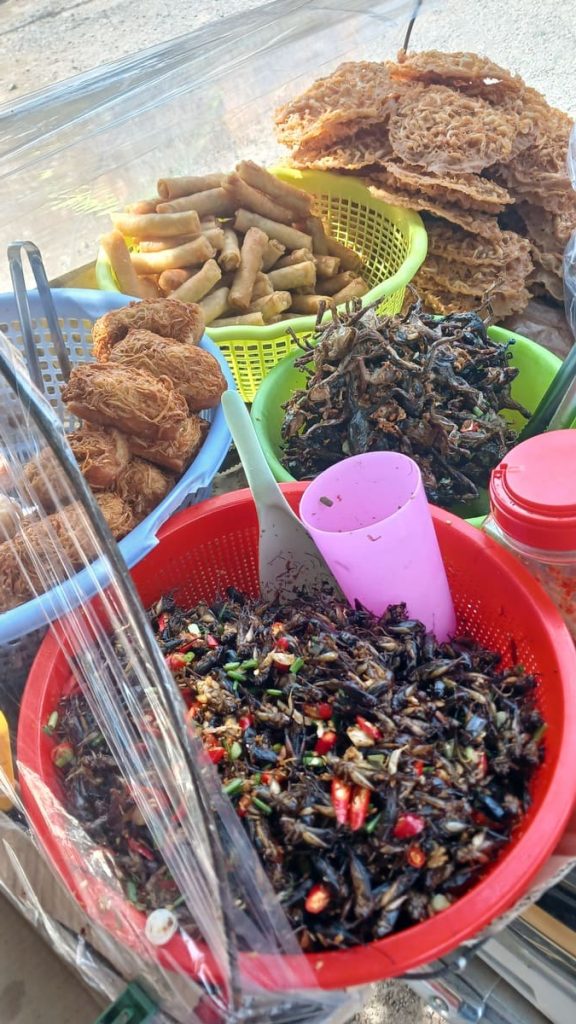
I have the name of my future book about Southeast Asia ready – Markets and Temples.
There are just so many of them.
Well, if you want to visit yet another authentic market in Cambodia, then go to Phsar Boeung Chhouk. Vendors there sell everything and anything. Expats used it as their primary grocery shopping place before the supermarket Lucky opened in Battambang.
8. Battambang Museum
It’s a very humble museum. A bunch of statues and old Angkorian sculptures. Little information in English (which is standard for museums in Southeast Asia).
Not as big or as well-organized as the museums in Siem Reap and Phnom Penh but the price is to match – 12.000 KHR (3 USD) for foreigners.
Honestly, you should only visit if you have a keen interest in ancient Cambodian history.
9. The Night Market
The Night Market in Battambang is a row of vendor stalls on Road #1, parallel to the River.
It doesn’t compare well with night markets in Thailand, Luang Prabang (Laos), or Da Lat (Vietnam) but there is good food to be found anyway.
My favorite is the corn on the cob. It’s buttery and sweet. Commonly sold for 1500-2000 KHR (~0.5$).
10. Pub Quiz at Pomme Bar (Wednesday evenings)
I love pub quizzes! I learned about Pomme’s Wednesday pub quiz because I was already staying in the hostel upstairs.
The Quiz Master is a pro and the difficulty of questions is just right. There is no fee to enter but winners get a pitcher of beer. Humble brag time – I drank my share of a pitcher of beer at the end of the night.
The pub quiz takes place on Wednesday nights starting at 19:30. Check out Pomme Battambang’s Facebook page for more information.
Things to do near Battambang
Here are some places outside Battambang City (but close enough) that are worth visiting. With some good planning and a motorcycle, it is indeed possible to see everything in 1 day.
11. Samrong Knong Killing Fields
When pulling out weeds, remove them roots and all.
When the Khmer Rouge came to power, nobody was spared. The regime killed millions indiscriminately.
Many Buddhist Monasteries and schools were turned into prisons. And every prison had a “killing field”.
Such is the case with Wat Samrong Knong.
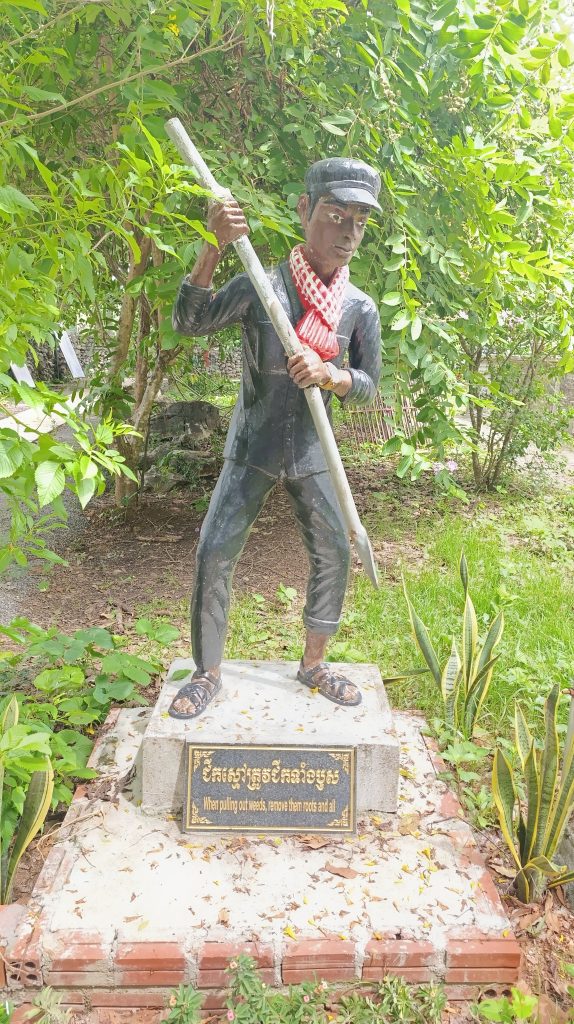
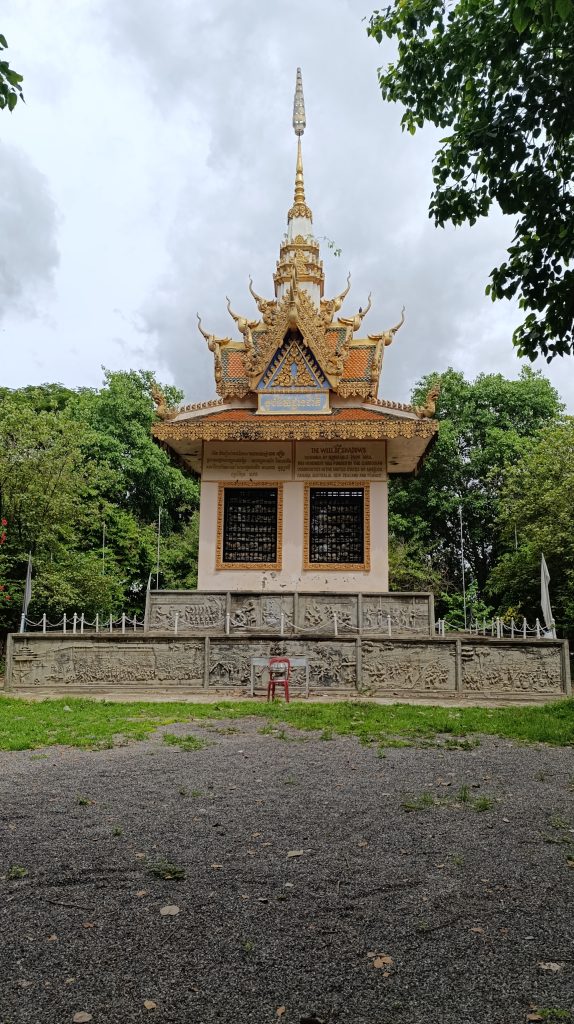
You can visit the former site of executions and mass burials. It’s not dissimilar to the better-known ones in Phnom Penh – Choeung Ek and Tuol Sleng.
A memorial ossuary called “The Well of Shadow” sits in the middle of the field, now housing thousands of skulls and bones.
Vivid horror.
12. Eat Bamboo Sticky Rice

Along rural streets around Battambang, there is no way to miss the numerous vendors selling sticky rice in long bamboo tubes.
The tube is sealed and the rice inside is usually fresh and warm. A couple of beans add some flavor to this sugar-free snack.
Give this typical Cambodian countryside snack a try!
13. Wat Ek Phnom
The Angkor Empire was not only in Angkor Wat!
It covered a massive amount of land and wherever the Ancient Khmer lived, they built temples. Examples can be found even outside of what is today Cambodia – see Vat Phou near Pakse in Laos for example.

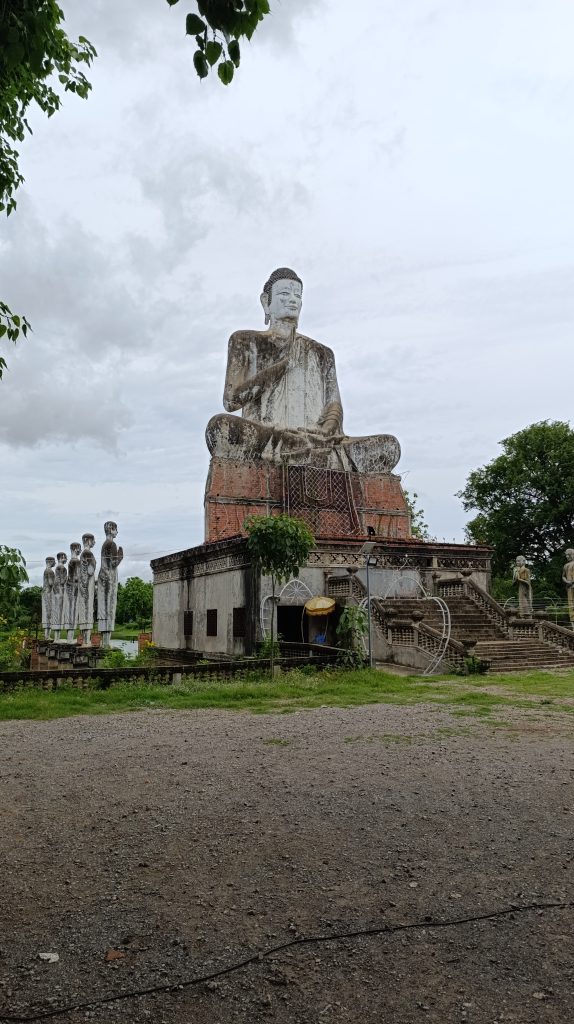
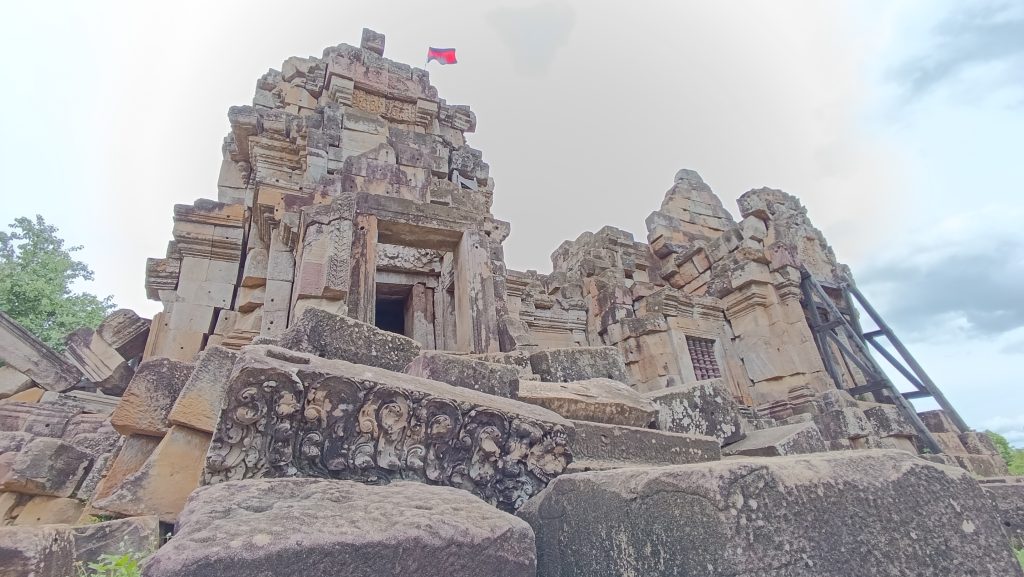
But this is about Wat Ek Phnom. An ancient temple from the 12th century, still somewhat preserved. Entry fee is only 1 USD.
Outside you can also see a Giant Buddha bizarrely empty and neglected on the inside. A modern Wat sits on the other side.
14. Mrs. Bun Roeung’s “Ancient” House
It’s not really ancient as it was built in the 1920s. It is a prime example of rural Cambodian architecture from the Colonial period. Find it here.
It is an ancestral house – great-grandkids of the original owners still live inside. One of them will give you a tour of the house.
While ostensibly free, there is a “mandatory tip” of 2$ for the entry and tour. Avoid the overpriced souvenirs though.
15. Kampong Pil Hanging Bridge

A shabby-looking, wooden-floored bridge will see you on the other side of the Sangker River.
It’s definitely a very Instagrammable place. Locals zoom on motorbikes and bicycles alike, so it’s pretty safe to cross.
You may stop to check out the Kampong Pil Pagoda on the other side of the road before crossing the bridge.
16. Wat Banan
I will completely understand if you’re templed out by this time in your Cambodian itinerary.
None of the ancient temples are a “must-visit” despite what anybody tells you. You owe nobody – do what is enjoyable!
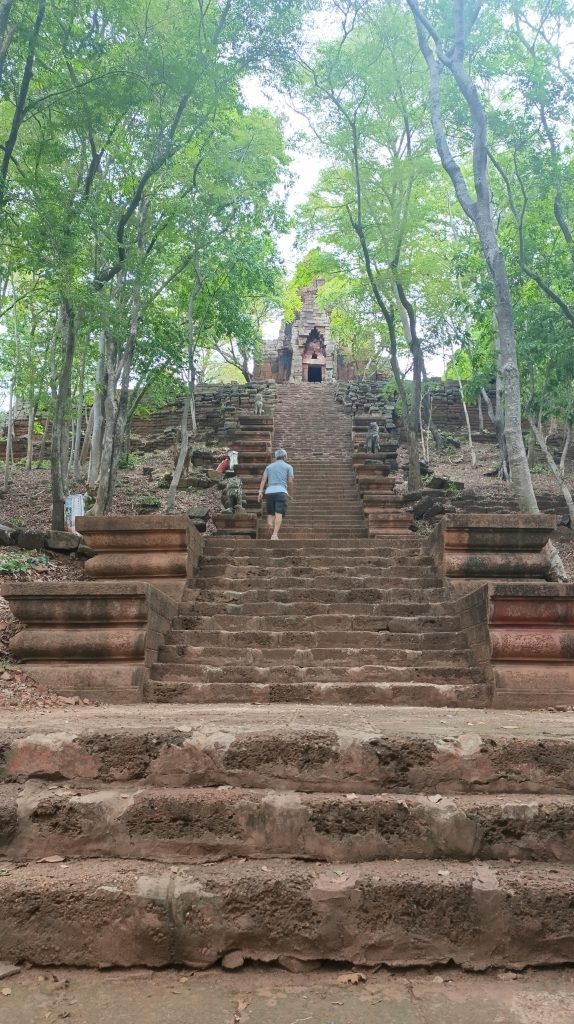

Wat Banan is beautiful. You have to climb about ~200 stairs, the last of which – quite steep.
The view is nice and the area is somewhat mystical. Honestly, I enjoyed my visit but frankly, it’s a skippable place (especially if you’ve been to Angkor Wat).
Entrance fee stands at 2$ for foreigners.
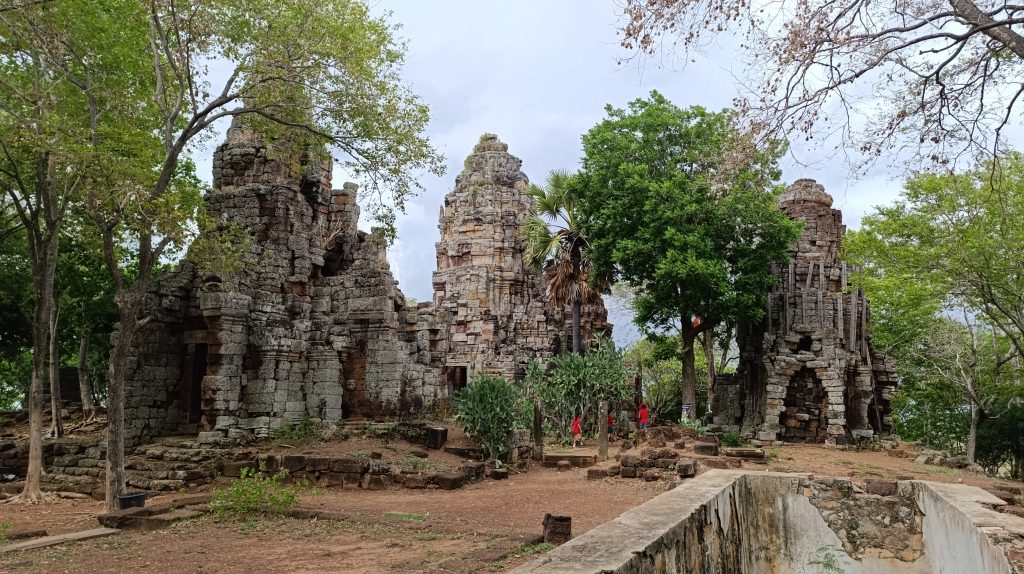
17. Ride the Bamboo Train (Norry)
Khmer Rouge stopped train transport in Battambang. The Battambang locals invented the bamboo train, also called Norry – a platform made of bamboo with iron axles running on the train tracks with a simple engine. It reached up to 40 km/h and had no brakes!
As tourism picked up in the 2010s, locals had already stopped using the Bamboo Train. It became one of the most popular tourist attractions in Battambang.
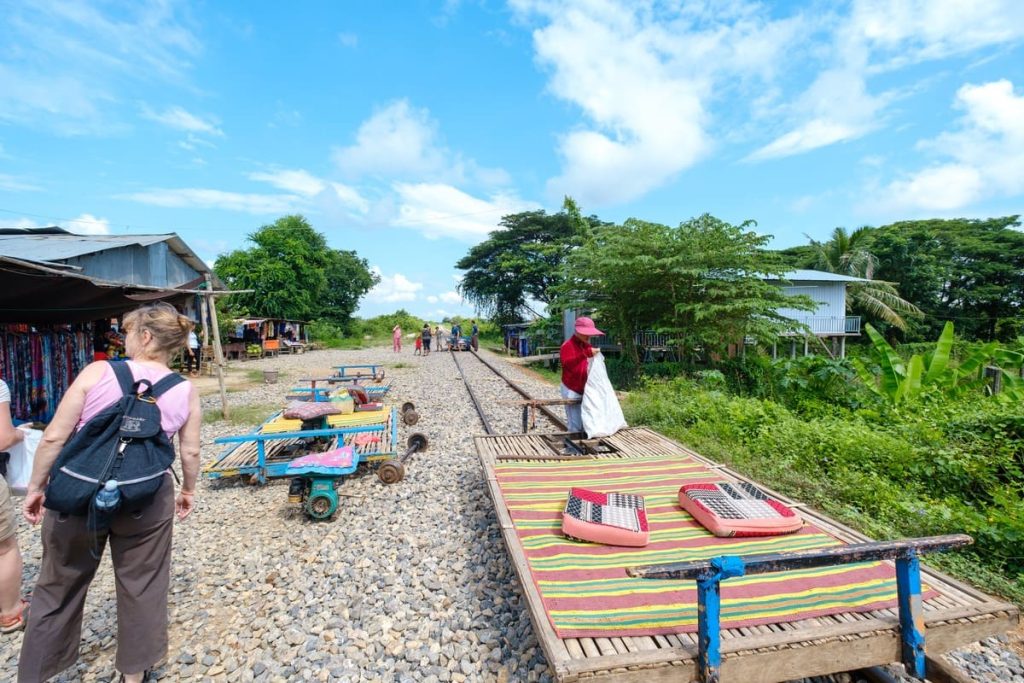
Fast forward to today and the Old Bamboo Train is no more – now the train from Phnom Penh uses these tracks. Instead, a New Bamboo Train runs specifically for tourists near Banan Temple. It’s a lot less authentic than its predecessor. Read the comparison here.
It goes from Prasat Banan to Chhoeuteal commune – a route of some 4 km. You can book a tour including the Bamboo Train and the next few places on the list.
18. Prasat Snoeng Temple
Not another temple, Simon!
I hear you. Only visit Prasat Snoeng if you have a deep-seated interest in ancient history or Angorian architecture. It would be amiss not to add it here for those who do.
19. Wat Phnom Sam Pov
Yeah, another wat, but this one comes in combination with the next two items on the list as they are practically at the same location.
Also, there is a giant stone-carved Buddha at the top of the hill. The Wat itself is similar to the many others you’ve inadvertently stumbled upon in Cambodia. Perhaps just a notch bigger and more beautiful.
The 1 USD entry fee includes everything on the mountain – the Wat, the Cave, and of course, watching the bats (continue below).
20. Killing Cave
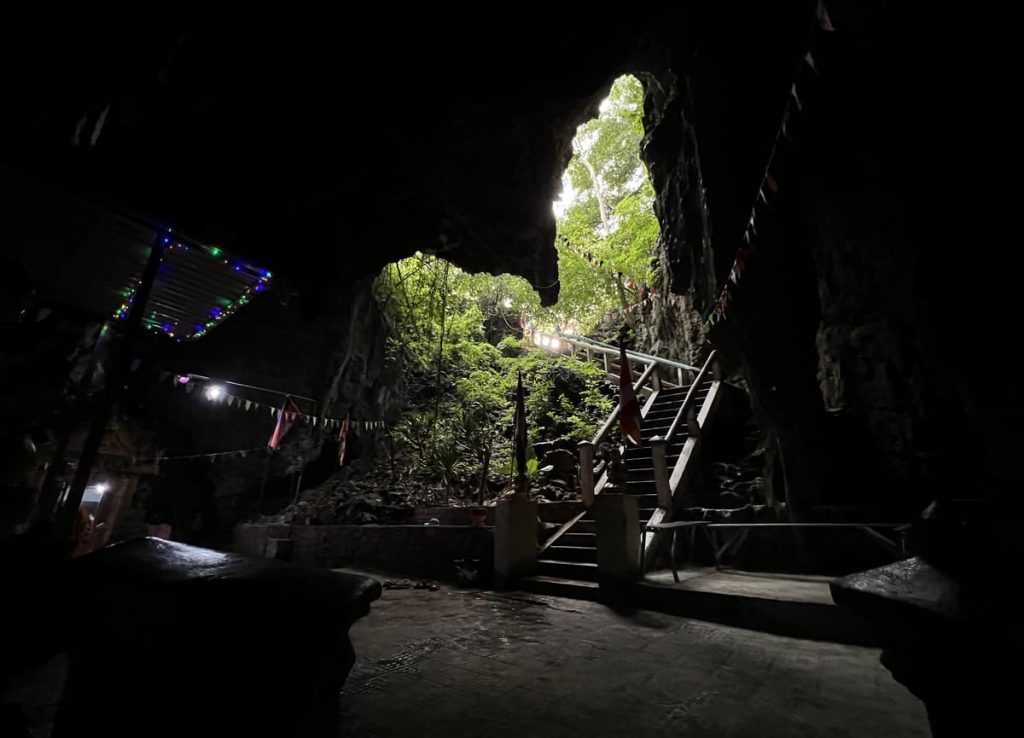
On the far end of the mountain you just climbed, the Khmer Rouge did what they did best – kill.
The cave is more vertical than horizontal and if you look closely, you may see bones still lying at the bottom. Outside there are a few sculptured dioramas depicting the various ways of torture.
There aren’t even any estimates as to the number of people murdered in the Cave – such was the indiscriminate and methodical nature of the genocide.
Most of the human remains have been gathered and evocatively displayed in a small memorial ossuary.
21. Watch the bats leave the Bat Cave

Leave the best for last, right?
Make sure to be at the top of Sam Pov (or Sampow) just before sunset. Viewing platforms have been set for the Battambang Crescendo – a horde of bats leaving the cave just as the Sun kisses the horizon.
I kid you not – there are millions of bats, flying orderly in a streak of darkness.
Whereas most of the things to do in Battambang are somewhat static and permanent – a pinch of history or culture.
The bats, however, are in stark contrast – alive, vibrant (in their own black way), and dynamic. See for yourself:
They are truly a sight to behold and can alone be the one thing that sets Battambang apart from other cities in Cambodia.
Transport to (and out of) Battambang
Battambang doesn’t have a functioning airport (perhaps in the future), so you can only reach it overland. Or perhaps there is another way…?
Train
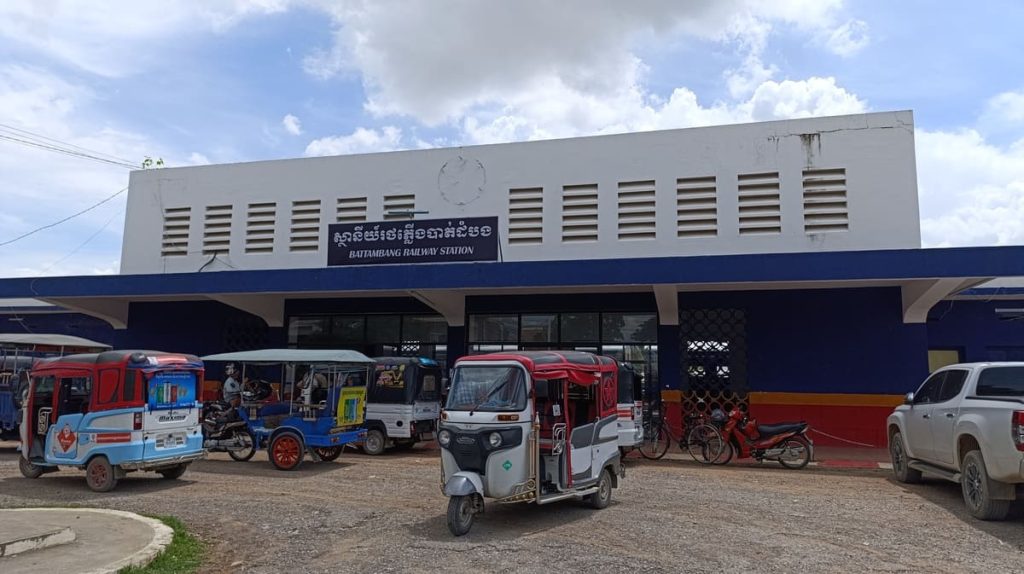
If you’re coming from Phnom Penh, take the train. It’s cheaper than the bus and although a bit slower (6h vs 5h), much more comfortable.
You can read all about traveling by train in Cambodia.
Bus
Buses and minibuses between Phnom Penh and Battambang depart every half hour and cost between 8 and 16 USD. Check times, companies, and prices on 12Go.Asia.
Boat
If you follow the Sangker River north from Battambang, it flows into Cambodia’s biggest lake – Tonle Sap. Once there, you may enter another canal to get to Siem Reap.
This boat ride was the locals’ preferred method of transportation for hundreds of years but today buses and both faster and cheaper, so the boat is only for tourists.
If you choose to go by boat, you will pass by many villages and observe local Cambodian life. You can go in either direction.
Where to next?
- If you’re staying in Cambodia, perhaps it’s time to go to Siem Reap or Phnom Penh.
- If you’re coming from there, take the train to Poi Pet and onwards into Thailand!
- Or maybe explore some of Laos?
- Or Vietnam?
